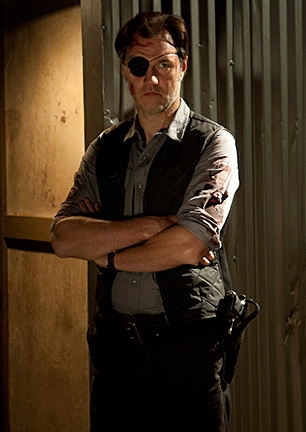Happy Halloween, readers!! We hope that you had a good weekend filled with parties, candy, tricks, and treats! We know that we sure did….

Now on the day itself, we are coming to you with our favorite spooky, ghostly Halloween Reads! These books that really get us in the spirit (get it?) of this fun filled holiday!
 Book: Dracula by Bram Stoker
Book: Dracula by Bram Stoker
Publication Info: Archibald Constable and Company, 1897
Though not the first vampire novel, “Dracula” is considered to be the work that redefined vampirism in modern literature. Unfolding in a series of letters, diary entries, and newspaper articles, “Dracula” tells the story of an Eastern European vampire count, his invasion of England, and the band of heroes that come together to defeat him. “Dracula” is on this list because it’s a classic in gothic horror that has long influenced the horror genre well into the start of the 21st century. It’s also a rather progressive work when looking at feminist issues, as Mina Murray Harker was a very active participant in the downfall of the Count, at least by Victorian standards. “Dracula” stands the test of time and should be read by every horror fan.
 Book: “The Shining” by Stephen King
Book: “The Shining” by Stephen King
Publication Info: Doubleday, 1977
The classic haunted house story gets twisted, turned, and amped up in King’s classic novel. The tale of the Torrence family, trapped for the winter in an ominous, haunted hotel, is one that has become burned into popular culture, thanks in part to the movie of the same name but loose interpretation. The original King novel doesn’t have the same subtleties that Kubrick brought to it, but it has some seriously scary moments. The ghosts that are haunting the hotel are all very scary, and then you add in the threat of Jack Torrence losing his damn mind and it becomes that much more horrifying. Read this one with the lights on, and wait until all the snow in your area is good and melted…
 Book: “Coraline” by Neil Gaiman
Book: “Coraline” by Neil Gaiman
Publication Info: Harper Collins, 2002
Though not particularly scary (it is for children after all), Neil Gaiman’s “Coraline” is still deeply unsettling. It’s the story of Coraline, a girl whose family has moved into a new home. Feeling neglected by her parents, Coraline is a bit morose, but then finds a new world with the “Other Mother”, a woman who looks just like her mother, but with buttons for eyes. The Other world seems pretty okay, but it suddenly becomes all too clear that Other Mother has more sinister plans in store. This story is both very creepy, but also is filled with a lot of heart. Gaiman knows how to capture childhood, from feelings, to experiences, to fears.

Book: “Midwinterblood” by Marcus Sedgwick
Publication Info: Indigo, October 2011
We read this book for bookclub a few years ago, and it is one that has stuck with me. Comprised of seven parts, the story unfolds throughout the centuries on an isolated island with a mysterious past. Each new story seemed only to add to the suspense and dread that slowly builds throughout the book. Re-reading it, one will still find connections between the stories that were missed the first time. It is as tragic as it is unsettling, and yet we loved every bit of it. The lyrical, almost fairytale-like, quality of the storytelling only makes the building sense of horror that much more shivery!

Book: “Anna Dressed in Blood” by Kendare Blake
Publication Info: Tor Teen, October 2011
This book could be marketed as a young adult, novel-version of the television show “Supernatural.” Featuring a teenage hunter named Cas Lowood who is in the “family business” of killing the dead, the story is surprisingly creepy for a young adult story. Blake doesn’t pull her punches with the spook factor or the body count. The ghost “Anna” is somehow both creepy and sympathetic at the same time. Don’t make any mistake, she is no “Casper the Friendly Ghost” as Cas and Co. learn to their detriment!

Book: “Help for the Haunted” by John Searles
Publication Info: William Morrow, September 2013
We got to meet John Searles at an ALA convention a few years ago (he had some great stories, but we will rave about that at a different time) where he was promoting his new book. We immediately chose it as yet another bookclub story, and it was a big hit. Sylvie Mason’s family help “haunted souls” for a living until the night they are lured to their death in a church. A year later, Sylvie is still piecing together her memories of the night and dealing with her parents’ bizarre legacy. For what could be easily categorized as a mystery/thriller novel, “Help for the Haunted” has some very creepy elements and is definitely worth checking out!
What are your favorite Halloween reads? Share in the comments below!

 Book: “The Last Camel Died at Noon” by Elizabeth Peters
Book: “The Last Camel Died at Noon” by Elizabeth Peters
 Book: “Ghostland: An American History in Haunted Places” by Colin Dickey
Book: “Ghostland: An American History in Haunted Places” by Colin Dickey

 Book: “The Thousand Names” by Django Wexler
Book: “The Thousand Names” by Django Wexler Book: “We Eat Our Own” by Kea Wilson
Book: “We Eat Our Own” by Kea Wilson
 Film:
Film:  Film:
Film:  Film:
Film:  Film:
Film:  Film:
Film:  Book: “Tower of Thorns” by Juliet Marillier
Book: “Tower of Thorns” by Juliet Marillier Book: “Outcast (Vol.1): A Darkness Surrounds Him” by Robert Kirkman and Paul Azaceta (Ill.)
Book: “Outcast (Vol.1): A Darkness Surrounds Him” by Robert Kirkman and Paul Azaceta (Ill.)

 Book: “Children of the Fog” by Jen Williams
Book: “Children of the Fog” by Jen Williams
 Book: “The Walking Dead: Rise of the Governor” by Robert Kirkman and Jay Bonansinga
Book: “The Walking Dead: Rise of the Governor” by Robert Kirkman and Jay Bonansinga
